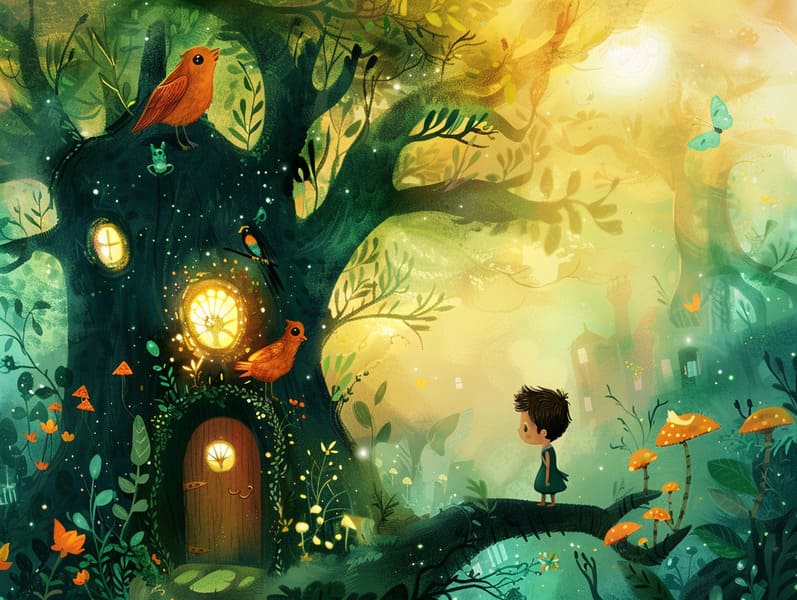The Journey of Famous Fairy Tales and the Unchanging Grandeur.
The Journey of Famous Fairy Tales and the Unchanging Grandeur.
Blog Article

Historical fairy tales have long histories. These stories have been relayed from one generation to the next long before they were ever published. They were born from a variety of traditions, including Eastern traditions. They were initially passed along among mature audiences, often carrying themes and messages relevant to the societal norms and beliefs of the time.
The Brothers Grimm, Jacob and Wilhelm Grimm, were among the first to compile and release many of these beloved fairy tales. Their collection, "Grimm's Fairy Tales," included classics like "Ashenputtel," "The Bread Crumb Trail," and "Snow White," which have since become mainstays in the world of classic fairy tales. Similarly, Hans Andersen's fantastical tales, such as "The Mermaid's Tale," and "The Ugly Duckling," have captivated hearts worldwide, ensuring their place in the pantheon of beloved fairy tales.
Despite their ancient origins, traditional fairy tales remain as pertinent as ever, especially as bedtime stories for kids. These magical stories are now available in multiple formats, including richly illustrated books, captivating animations, and digital fairy tales.
Their ongoing significance can be attributed to several delightful features:
Moral Lessons: Ancient fairy tales often convey important moral lessons. Fairy tales like "The Shepherd Boy and the Wolf" teach the benefit of truthfulness, while "The Tale of the Tortoise and the Hare" emphasize the benefits of resolve and unpretentiousness. These narratives offer young readers clear distinctions between moral and immoral, forming their moral compass in a gentle yet deep way.
Empathy and Understanding: Ancient fairy tales frequently portray heroines facing struggles and tests, urging readers to comprehend with their struggles and rally behind their triumphs. For instance, "The Tale of Beauty and the Beast" points out the significance of seeing beyond looks to appreciate the inner being of a character, building insight and recognition.
Cultural Insights: Many fairy tales are deeply embedded in the cultural contexts from which they blossomed. Discovering these stories can provide intriguing perspectives into different heritages, cultivating a sense of global awareness and acknowledgment.
Fantasy and Imagination: The extraordinary elements in classic fairy tales—talking beasts—generate children’s creative dreams. These tales lead readers to magical realms, revitalizing imaginative thinking and a sense of fascination that continues a lifetime.
Traditional fairy tales are not only mesmerizing but also teaching. They act as fascinating tools in strengthening various thinking and feeling skills in young readers. When ancient fairy tales are read aloud, they nurture speech development by bringing new terms and intricate sentence structures. This practice also advances auditory skills and attention, as kids stay focused, looking forward to see what happens next.
Furthermore, analyzing the themes and characters of classic fairy tales can foster evaluative skills and analytical skills. Kids are educated to identify patterns, expect results, and catch on to cause and effect. These explorations also boost young readers speak out their thoughts and feelings, adding to their emotional intelligence.
In today’s online age, the presence of online storybooks has made these fairy tales more obtainable than ever. Web platforms and mobile apps share large libraries of classic fairy tales that can be looked at or find it here listened through anytime, anywhere. Fairy tales read aloud are particularly prevalent, making available an engaging way for kids to take part in these fantastical tales. Spoken stories and read-out-loud stories transport characters and settings to life, often accompanied by captivating harmonies and melodies that enrich the story journey.
The unfading fascination of classic fairy tales lies in their ability to transform to present days while maintaining their main lessons. Contemporary adaptations of these narratives often feature more multicultural figures and modern settings, making them understandable to today’s audience. However, the basic principles of fortitude, generosity, and righteousness remain unchanged, continuing to strike a chord with children of all ages.
Fairy tales also offer a sense of ease and familiarity. They deliver a systematic narrative with a recognizable beginning, middle, and end, often winding up with the resolution of conflicts and the triumph of morality over immorality. This uniformity can be heartening for the young, affording a sense of steadiness in an shifting world.
Timeless fairy tales continue to spellbind and train new generations, maintaining their splendor and value in modern society. As children's night stories, they impart upon a perfect blend of fantasy and learning, encouraging moral values, empathy, and creativity. The proliferation of digital fairy tales and the popularity of fairy tales recited guarantee that these traditional narratives remain reachable to new generations.
By perpetuating and conveying these stories, we continue to glorify the rich tapestry of fantasy and cultural heritage. Whether you are experiencing a gorgeously illustrated book, browsing a online library, or playing an audio story, the mystique of children's fairy tales is always within reach. These fairy tales convey of the invariable magic of storytelling and its ability to join us across epochs and places.
Whether you are exploring a vividly illustrated book, exploring a web-based library, or hearing an spoken story, the attraction of bedtime fairy tales is always within reach.
These narratives highlight of the timeless power of fairy tales and its ability to hold us together across time and space, forging a link that captivates and teaches alike.